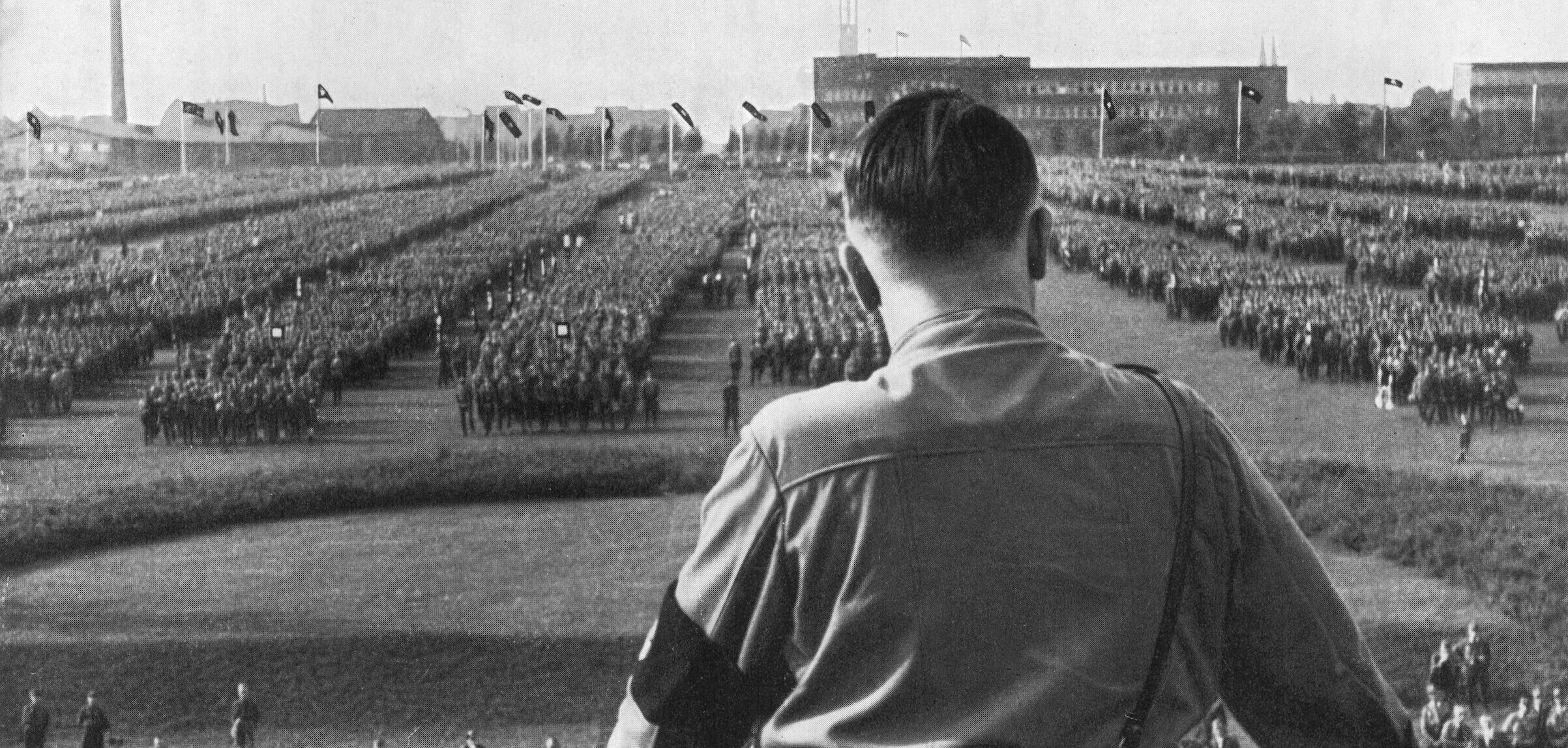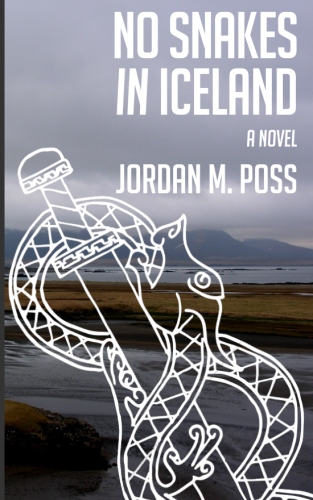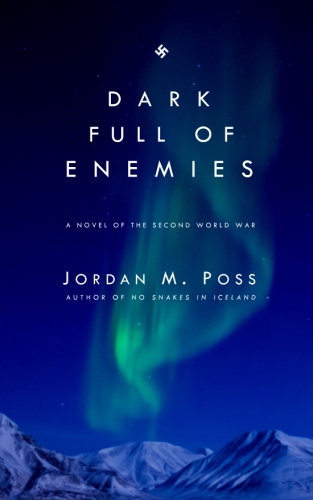Four years worse than 2020: 1945
/Shellshocked 16-year old German soldier Hans-Georg Henke weeps after surrendering to American troops, April 1945. Read more here.
This is the fourth and penultimate post in this short series on years worse than 2020. We began with 1315, a year of natural disaster and continent-wide starvation; continued with 1348, a year of pandemic like our own, but exponentially worse; and followed that yesterday with brief looks at six other terrible years I considered including. We resume with two years from within living memory. I start with the year that I think best qualifies to be called hell on earth:
1945
For Americans, who lost 400,000 servicemen killed but remained relatively untouched by a war fought on the other side of two oceans, it is easy to identify 1945 with V-E Day and V-J Day and imagine people cheering in the streets and sailors kissing nurses in Times Square. But that’s a moment in one corner of the globe at the tail end of the bloodiest war in all of human history.
The war in Europe
About that war: As 1945 began, in Western Europe the Battle of the Bulge, a massive German counterattack that aimed to break through the Allied lines and sunder the British and the Americans, had petered out and January saw the mopping up operations. American troops, angered over German massacres of American prisoners during the battle, committed their own massacres of surrendering Germans.
As the western Allies pressed across the Rhine and into Germany, they discovered Nazi labor camps, the most notorious being Dachau, liberated by the Americans, and Bergen-Belsen, liberated by the British. Skeletal survivors greeted the soldiers who captured the camps. The soldiers discovered railroad cars or storage buildings full of emaciated corpses, and sometimes neat rows of prisoners executed in batches before the guards abandoned the camp. At Dachau, some of the guards remained behind. The American infantry who caught them machine gunned them.
On the Eastern or Russian Front, the Soviets began massive assaults on the German lines in two zones—along the Vistula and Oder Rivers and against the German redoubts in East Prussia, offensives that committed four million men to the fighting, before making the final drive on Berlin. Along the way the Red Army liberated several concentration camps, including the extermination camp Auschwitz-Birkenau, which the Nazis had evacuated at the beginning of they by sending the surviving prisoners on forced marches to the west. Thousands died. Some of the female survivors liberated by the Russians were raped.
A refugee crisis began as soon as Russian forces entered German territories like East Prussia or Pomerania, with millions of German civilians fleeing ahead of the Red Army. Many went on foot in the dead of winter. Eyewitnesses wrote of women staggering westward clutching babies that had already frozen to death. Those that were caught by the Red Army were brutalized; from the beginnings of the 1945 offensives through the fall of Berlin and beyond, Russian soldiers raped as many as two million women, sometimes gang-raping a single woman over a dozen times and raping any females from grandmothers to eight-year olds. German evacuations of civilians along the Baltic coast in Operation Hannibal resulted in the largest ever maritime evacuation, moving over two million people to the west, as well as the largest ever loss of life from a sinking ship, when a Russian submarine torpedoed the Wilhelm Gustloff, killing almost 10,000 people, most of them civilian women and children.
By the time Berlin fell, Hitler had killed himself and taken millions with him—including hundreds of thousands of old men and boys conscripted as militia, the vast majority of whom were slaughtered. In just the three offensives it took the Soviets to capture Berlin, a quarter million Soviet soldiers died and almost 900,000 were wounded. Half a million German soldiers were captured, many of them not to be released until the mid-1950s, and an unknown number—but likely in the hundreds of thousands—were killed. And reflect again on the civilians caught in between. Thousands committed suicide, sometimes en masse.
The war in the air
The air forces of the Allied countries continued strategic bombing campaigns both of Germany and Japan, wreaking widespread destruction and massive civilian casualties. The most notorious single incident in Europe occurred in February of 1945, when Dresden was annihilated overnight, killing over 20,000 people.
Meanwhile, long-range bombers stationed on Pacific islands captured from the Japanese in the previous years of the war—and always captured with heavy loss—began fire-bombing Japanese cities. Incendiary bombs of the kind dropped on Dresden had even more devastating effect in the timber- and paper-constructed houses of Japan. In one nighttime raid in March, firebombing destroyed sixteen square miles of Tokyo and killed at least 90,000 people—the most destructive air raid of the war, even including those that destroyed Hiroshima and Nagasaki. Piles of bodies clogged the streets where civilians fleeing the fires bottlenecked and were trapped. Most of the corpses were too badly burned to be identified and were buried in mass graves.
67 cities in Japan were targeted with firebombing, and some suffered much greater destruction than Tokyo. Millions who survived the bombings were left homeless.
The war against Japan
Through the Spring and Summer in the Pacific the Allies—chiefly the British and Americans, but with help from other Allied countries including offensives launched by the Chinese—pressed in toward the Japanese home islands and did so with renewed vigor following the surrender of Germany. The British pressed through the jungles of Burma; the Americans landed on the islands of the Philippines and the volcanic island of Iwo Jima. The US Marine Corps committed over 100,000 Marines to the latter, an island of eight square miles, and lost almost 7,000 killed and 20,000 wounded. Almost all of the Japanese defenders were wiped out.
Worse yet was the Battle of Okinawa, which lasted from April 1 to mid-June and saw American casualties, both killed and wounded, doubled. These losses were controversial at the time and would only prove more so following the revelation of the atomic bomb.
The two bombs that ended the war are probably the most notorious single thing to come out of 1945, and justifiably so. The figures are murky, owing both to the nature of the bombs, which vaporized their targets instantaneously, and to the political debate surrounding them, which has tempted people to fudge the numbers both upward and downward for decades. But by a conservative estimate, the bomb dropped on Hiroshima instantaneously killed 70,000 people and wounded as many more; the bomb dropped on Nagasaki killed at least 35,000 and wounded almost twice as many. And this is not even to raise the issue of the firestorms started by both bombs, or the much longer-lasting effects of radiation poisoning.
The aftermath
And so the war ended. But the killing did not. The German refugee crisis was ongoing and would continue for years, as “ethnic cleansing” purged the bloodlands of Eastern Europe of unwanted elements, especially ethnic Germans. A million Germans would die in the year after the war ended. Eastern Europe saw widespread ethnic cleansing, including waves of anti-Semitic violence, even before the war had ended, violence to which Soviet authorities turned a blind eye, often allowing it continue for years.
The Soviets were busy, after all; they continued systematic purges both of their own ranks—it was at this time that Soviet authorities netted Aleksandr Solzhenitsyn, who had served in the East Prussian campaign, for criticizing Stalin in a private letter and sent him to the Gulag—and of any possible resistance to Soviet overlordship of the lands they had “liberated” from the Nazis. They were really fighting two wars—one against the Nazis and one against any local resistance that arose to reclaim control of their countries following the expulsion of the Nazis. In some places, especially remote regions of Yugoslavia and Hungary, the fighting would continue into the 1950s. The last Polish soldier fighting the Soviets would not be killed until 1963.
Ultimately 70-85 million people were killed in the war itself—a number that has been continually revised upward. The majority of these deaths were civilians and the vast majority of those were Chinese and Russian, many of the latter being victims of the Holocaust. Here are some very safe, lowball estimates of the death toll. For the many who apparently like infographics, let me recommend this chart, which also includes some conservative estimates but is carefully designed to convey the proportion of dead from each country pulled into the war. This widely shared video makes a similar point. Averaged out across the six years from 1939 to 1945, 27,000 died per day.
And, in addition to the manmade destruction that peaked in this year, there were typhoons and earthquakes.
Just the beginning
The events of 1945 brought about the end of World War II, to be sure, but history does not consist of discrete episodes that begin and end on precise dates, and, as I hope I’ve made clear in the descriptions above, 1945 not only saw tremendous upheaval and loss of life but set up future conflicts, disasters, and upheavals. The entire endgame of the war created the conditions out of which the Cold War would emerge, including not only the overarching US vs USSR conflict but the many proxy wars in which satellites of the First and Second Worlds would bleed each other for fifty years.
To name just one example, in 1945 a Communist guerrilla leader who had spent years fighting the Japanese occupiers of his country declared the newly liberated French territory of Indochina the Democratic Republic of Vietnam. That leader was Ho Chi Minh.
That will prove relevant to this series in its final installment, tomorrow.
Further reading
The literature on these events is enormous. What follows is a short selection of some of the best books I’ve read or consulted on these topics over the years.
Antony Beevor’s The Fall of Berlin 1945 is a well researched and powerfully presented account of the war in Europe’s climactic months. This book’s account of the fall of Danzig to the Russians depressed me so much that I took a two-week break in the middle of it. For a broad look at the war’s terrible aftermath in Europe read Keith Lowe’s Savage Continent, which first made me aware of the ethnic cleansing and warfare that continued long after the war. Anne Applebaum’s Iron Curtain: The Crushing of Eastern Europe tells the story of Soviet domination of half of Europe beginning during the war. For yet broader Eastern European context, read Timothy Snyder’s Bloodlands: Europe Between Hitler and Stalin.
For the end of the war against Japan, I recommend Downfall, by Richard B Frank. Though parts of its examination of World War II’s most famous photograph are dated owing to subsequent research, James Bradley’s Flags of Our Fathers is a good popular history of the Battle of Iwo Jima—and the only book that has ever given me nightmares. A good short history of the Battle of Okinawa is that by Marine veteran Robert Leckie.
Good histories of the war that do not neglect the massive losses of life and the scale of human suffering involved include those of Andrew Roberts, Max Hastings, and Antony Beevor. The book I recommend for a comprehensive history of the Nazi camp system, from beginning to liberation, is Nikolaus Wachsmann’s KL.
For grunt’s eye views of some of these events: Siegfried Knappe’s memoir Soldat begins with a long description of the final battle for Berlin. Knappe served as the adjutant to the commander of the city’s defenses, in which capacity he met Hitler several times. His memoir is also valuable for including his years spent in Soviet captivity after the war. The Forgotten Soldier, by French-born German soldier Guy Sajer, describes in nightmarish detail the final stages of the war along the Baltic coast. Novelist George MacDonald Fraser’s memoir Quartered Safe Out Here recounts his experiences in the Burma campaigns of 1945 and deserves to be more widely read among Americans, who are mostly unaware of the British contribution to the defeat of Japan. And the great memoir to come out of the war is EB Sledge’s With the Old Breed, the second half of which offers a harrowing account of the 24/7 nightmare of Okinawa.
I also recommended some books about the fall of Berlin and Hitler’s suicide back in the Spring.

















